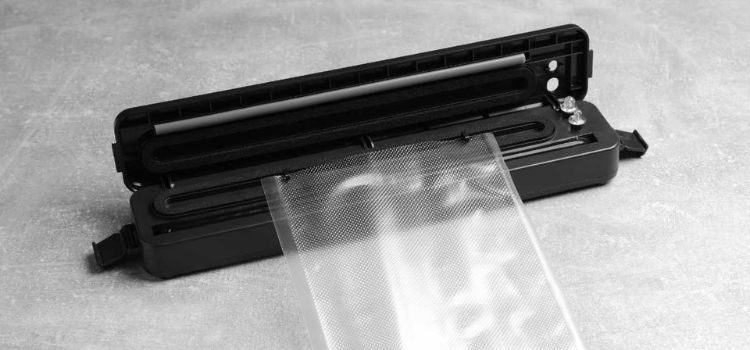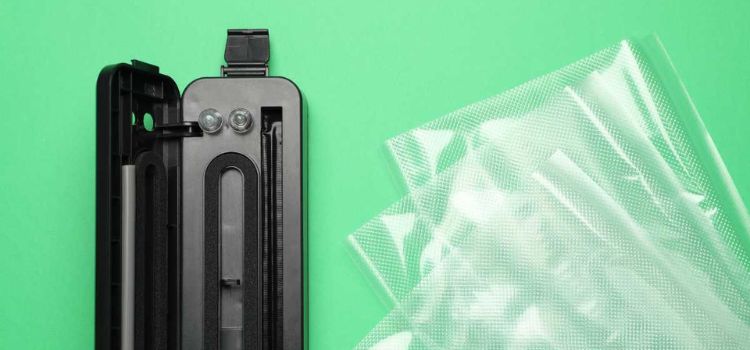As an Amazon Associate, I earn from qualifying purchases

Vacuum sealing has revolutionized the way we store and preserve items, offering a versatile solution for both food and non-food products. This technology involves removing air from packaging to extend shelf life, protect against external elements, and maintain quality over time. The process is simple yet effective, making it an essential tool in modern kitchens and households.
By minimizing exposure to oxygen, vacuum sealing reduces the risk of spoilage, dehydration, and freezer burn. It’s a method embraced by many for its practicality in preserving the freshness of ingredients and safeguarding valuables.
Types of Foods That Can Be Vacuum Sealed
Vacuum sealing is particularly popular in the culinary world, providing an efficient way to keep various foods fresh and flavorful.
- Fresh Meats and Seafood
Fresh meats and seafood are prime candidates for vacuum sealing. This process locks in natural juices and flavors, preventing the meats from drying out and extending their shelf life significantly. Whether you’re storing a prime cut of beef, chicken breasts, or fresh fish fillets, vacuum sealing ensures they remain tender and delicious. It also reduces the risk of freezer burn, allowing you to store meats and seafood for months without sacrificing quality.
- Fruits and Vegetables
Preserving fruits and vegetables through vacuum sealing helps maintain their nutrients and crispness. Berries, apples, carrots, and greens benefit from the reduced exposure to air, which slows down the ripening and decay process. Pre-freezing delicate items like berries before vacuum sealing can prevent them from being crushed. For vegetables, blanching them before sealing can help preserve their color and texture.
- Dried Goods and Grains
Dried goods such as beans, rice, pasta, and cereals can be vacuum sealed to protect them from moisture and pests. This method keeps pantry staples fresh for extended periods, ensuring you always have quality ingredients on hand. Vacuum sealing is particularly beneficial in humid climates where dried goods are susceptible to spoilage.
- Prepared Meals and Leftovers
Vacuum sealing is an excellent way to store prepared meals and leftovers. This practice not only extends the life of your dishes but also helps in meal planning and portion control. Whether you’ve cooked a large batch of stew or have leftover lasagna, vacuum sealing retains the flavors and textures, making reheating a breeze. It’s a great option for busy individuals looking to enjoy homemade meals without the daily cooking hassle.
- Dairy Products and Cheeses
Cheeses and other dairy products can benefit from vacuum sealing, which helps prevent mold and extends their shelf life. Hard cheeses like cheddar and parmesan maintain their flavor and texture, while softer cheeses like mozzarella can be kept fresh for longer. Vacuum sealing can also be used for storing butter, ensuring it remains fresh and free from fridge odors.
Non-Food Items Suitable for Vacuum Sealing

The versatility of vacuum sealing extends beyond food preservation, offering practical solutions for a variety of non-food items.
- Clothing and Textiles for Protection: Vacuum sealing clothing and textiles can save space and protect against dust, moisture, and insects. Whether you’re packing away seasonal clothing, preserving baby clothes, or storing blankets, vacuum sealing allows you to keep them in pristine condition while maximizing storage space.
- Important Documents and Photos: Protecting important documents and photos from environmental damage is crucial. Vacuum sealing keeps them safe from moisture, mildew, and fading. Whether it’s birth certificates, legal documents, or cherished photographs, vacuum sealing offers peace of mind by preserving these items for future generations.
- Jewelry and Small Valuable Items: For safeguarding jewelry and small valuable items, vacuum sealing provides a protective barrier against tarnishing and environmental factors. This method is particularly useful for storing silver pieces, which are prone to oxidation. Vacuum sealing keeps them shiny and ready for wear whenever you need them.
- Camping and Travel Supplies: When heading outdoors, vacuum sealing can be a game-changer. It compresses and protects camping supplies like clothing, matches, and food, ensuring they remain dry and compact. For travelers, vacuum sealing outfits can save luggage space and keep clothes fresh, making packing more efficient.
- Medical and Emergency Supplies: Vacuum sealing is a practical way to store medical and emergency supplies, keeping them dry and organized. Bandages, medications, and first aid kits remain accessible and protected from moisture and contamination, essential for preparedness and peace of mind.
Tips for Effective Vacuum Sealing
Mastering vacuum sealing techniques can enhance the efficiency and effectiveness of this valuable preservation method.
Choosing the Right Vacuum Sealer and Bags
Investing in a quality vacuum sealer and compatible sealing bags is crucial. Consider your needs and frequency of use when selecting a sealer. Some models offer additional features like jar sealing or marinating functions. Ensure that the bags you choose are durable and suitable for the items you plan to seal.
Preparing Items Properly Before Sealing
Proper preparation is key to successful vacuum sealing. For foods, ensure they are clean and dry to avoid compromising the seal. Pre-freezing wet or delicate items can help retain their shape. For non-food items, ensure they are free of dust and debris before sealing.
Best Practices for Sealing Different Types of Items
Different items require specific sealing techniques. For instance, when sealing liquids or moist foods, use a lower suction setting to prevent spillage. For sharp or pointed items, consider wrapping them in a soft material to prevent puncturing the bags.
Storage Tips to Maximize Longevity
Store vacuum-sealed items in a cool, dark place to maximize their lifespan. For fridge or freezer storage, place items in areas with consistent temperatures. Label sealed packages with dates and contents for easy identification and rotation.
Conclusion
Vacuum sealing is an incredibly versatile and effective preservation method suitable for a wide range of items. From extending the freshness of your favorite foods to safeguarding valuable possessions, vacuum sealing offers numerous benefits.
By understanding the best practices and exploring the diverse applications, you can enhance your storage solutions and enjoy the peace of mind that comes with knowing your items are well-protected. Embrace the possibilities of vacuum sealing to streamline your storage needs and preserve the quality of both consumables and treasured belongings.
FAQ
What shouldn’t you vacuum seal?
Avoid vacuum sealing soft cheeses, mushrooms, and garlic as they can spoil faster in anaerobic environments. Also, refrain from sealing cruciferous vegetables like broccoli and cabbage without blanching, as they release gases that can compromise the seal and freshness.
What are the best foods to vacuum seal?
Fresh meats, seafood, fruits, vegetables, and dried goods are excellent for vacuum sealing. These foods benefit from extended shelf life and preserved quality, making them ideal for long-term storage. Prepared meals and cheeses also maintain their freshness and flavor when vacuum sealed.
Can you vacuum seal any food?
While many foods can be vacuum sealed, it’s essential to consider the specific needs of each. Some foods require pre-treatment, like blanching vegetables, to maintain quality. However, avoid sealing foods that spoil quickly in low-oxygen environments, such as certain cheeses and mushrooms.
As an Amazon Associate, I earn from qualifying purchases